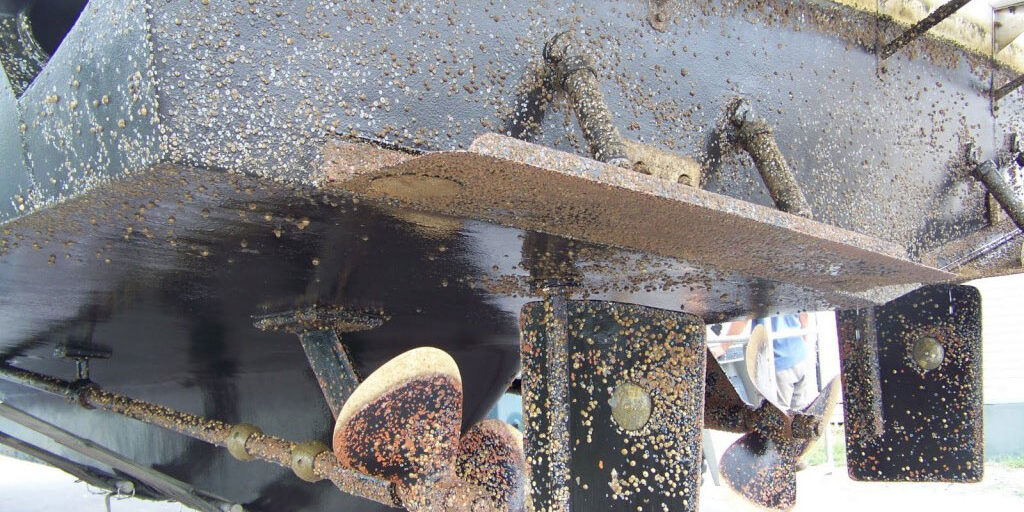Do I Need Bottom Paint on My Boat? Yes, you do!
When people talk about “bottom” paint, they are referring to antifouling paint. Antifouling paint is used to prevent marine organisms like barnacles, mussels, weeds and algae from attaching themselves to (and in the case of wooden boats, eating) the underwater portion of your boat’s hull. While most marine organisms that attach themselves to hulls – for example mussels and algae – can be scraped off, barnacles literally grow into the surface and form dense calcium deposits underneath the paint.
Antifouling paint works by releasing toxic biocides at a controlled rate. Copper compounds are the most popular; and conventional thinking is that the higher the copper content, the more effective the antifouling paint.
Antifouling bottom paint can:
- Increase the lifespan of your boat hull
- Increase your top speed
- Increase the boat’s maneuverability
- Increase fuel economy
- Provides a barrier between the water and the hull of your boat. This protection will decrease the likeliness of your hull logging any water.
Choosing an antifouling paint is regional, as boaters in the Great Lakes, Pacific Coast, Southeast, Gulf Coast and other regions tend to choose similarly to the fellow boaters at local marinas. Your choice will also depend on how you use your boat and the type of paint that was applied in the past (since there can be compatibility issues between some types and others). In general, softer paints can be applied over harder paints but not vice versa.
Antifouling bottom paints can be divided into three groups.
- Ablative (self-polishing) paints
are softer and allow the coating to wear of at a controlled rate. Similar to a bar of soap, when the boat moves through the water, the outer layer slowly wears away. The wearing away of the self-polishing bottom paint allows for the new, unoxidized paint to be revealed. However, if you trailer your boat, or it comes in and out the water for any reason, the paint will oxidize within 72 hours. In Northern climates, during the Spring, when placed back into service, the oxidized paint can easily be reactivated with a light scrubbing or sanding to expose a new fresh outer coating with active biocide protection against marine growth. This type of paint is not a good choice for fast-moving boats and will accelerate the ablation process and increase the paint loss.
- Hard bottom (non-sloughing) paints
are hard modified epoxy. This type of paint is very durable and does not wear off. Hard bottom paints have a higher ratio of pesticides (usually copper) that are exposed in the outer surface of the bottom paint coating. As time goes by, the surface where the copper resides will oxidize and become less effective against marine growth. Once the copper is depleted, the hard, tough, coating remains and can be difficult to remove especially if multiple layers of paint have been applied over the years. Once the accumulated paint reaches critical mass, it will begin to crack and peel, requiring a complete hull stripping. This is a good choice of bottom paint for high-speed power boats.
- Hybrid or semi-hard paints
are semi-hard ablative paints that incorporate the benefits of the ablative and the hard bottom paints into a single product. This type of bottom paint provides a hard, smooth surface that will resist buildup and will hold up to faster speeds and repeated haul-outs without loss of protection.
Do It Yourself – or Hire a Professional?
The only allure of doing your own bottom painting is saving money. Do keep in mind that many bottom paints are toxic and have to be treated as such. Some may require a pesticide license or other special permit to remove and apply. Bottom painting your boat is a very messy job – so be sure that you are fully prepared. With that said, DIY’ers will need to ensure that they’re also familiar with the entire procedure and follow all required safety precautions such as use of respirators and protective clothing and disposal of product waste accumulated by sanding. Don’t forget, many of these paints need specific, climate-controlled temperatures to cure.
Having a professional complete the job for you has several advantages. Time and effort miscalculated by the beginner can and most likely will be greater than expected especially if the hull is in need of substantial prep work or repair prior to painting. The professional will have all the equipment, safety gear and the prime, climate-controlled location to apply your boat coating in time for the upcoming boating season.







